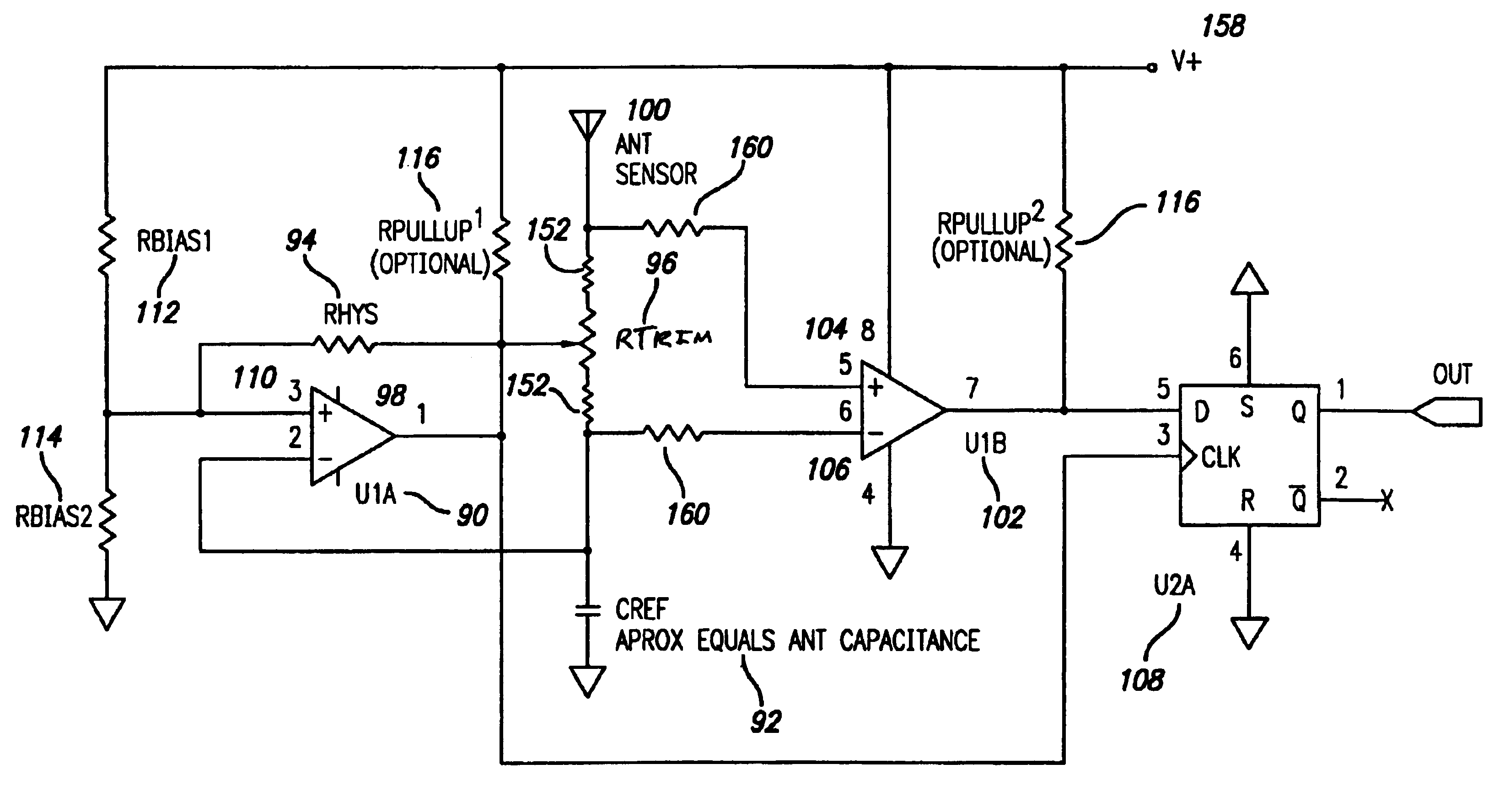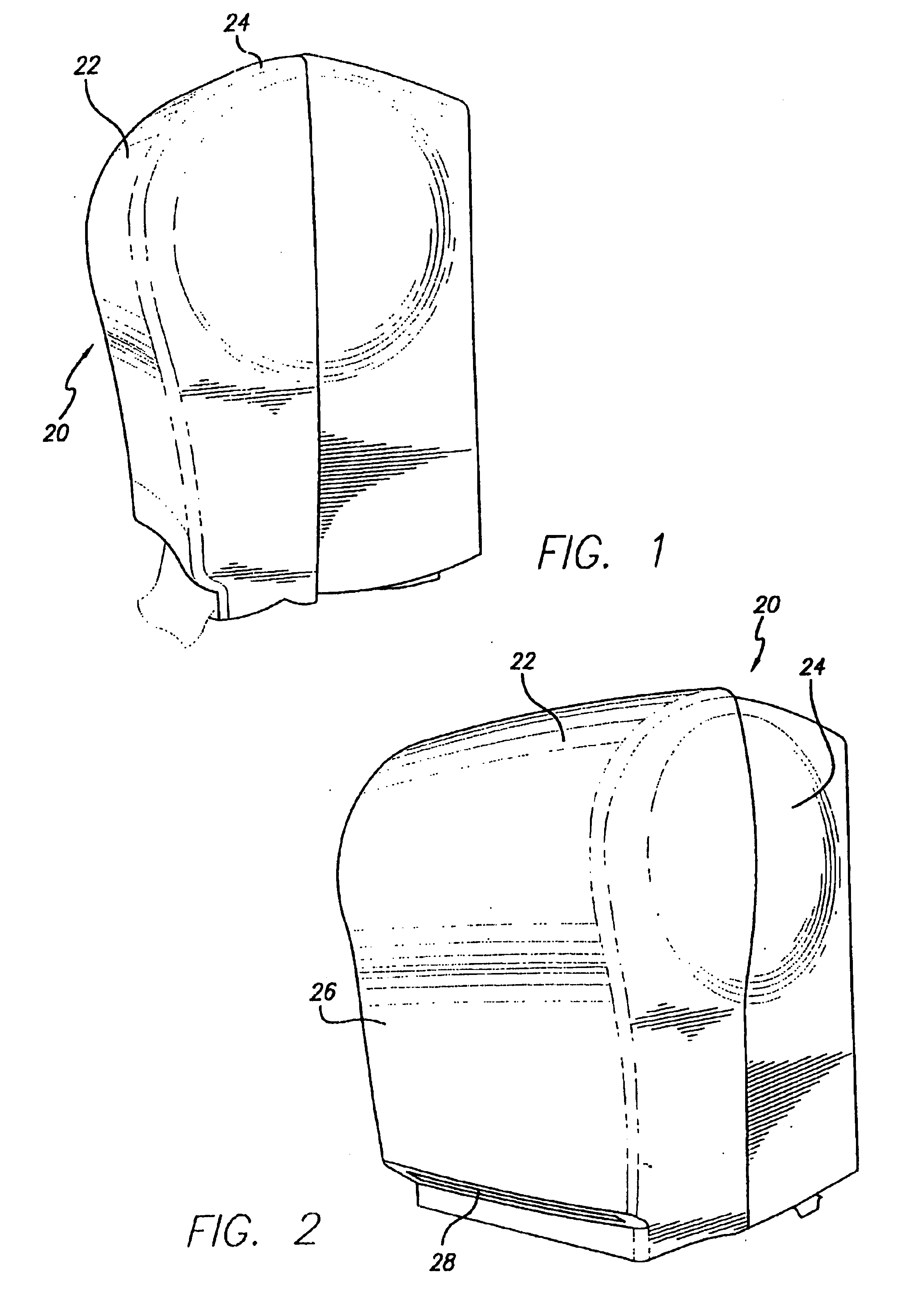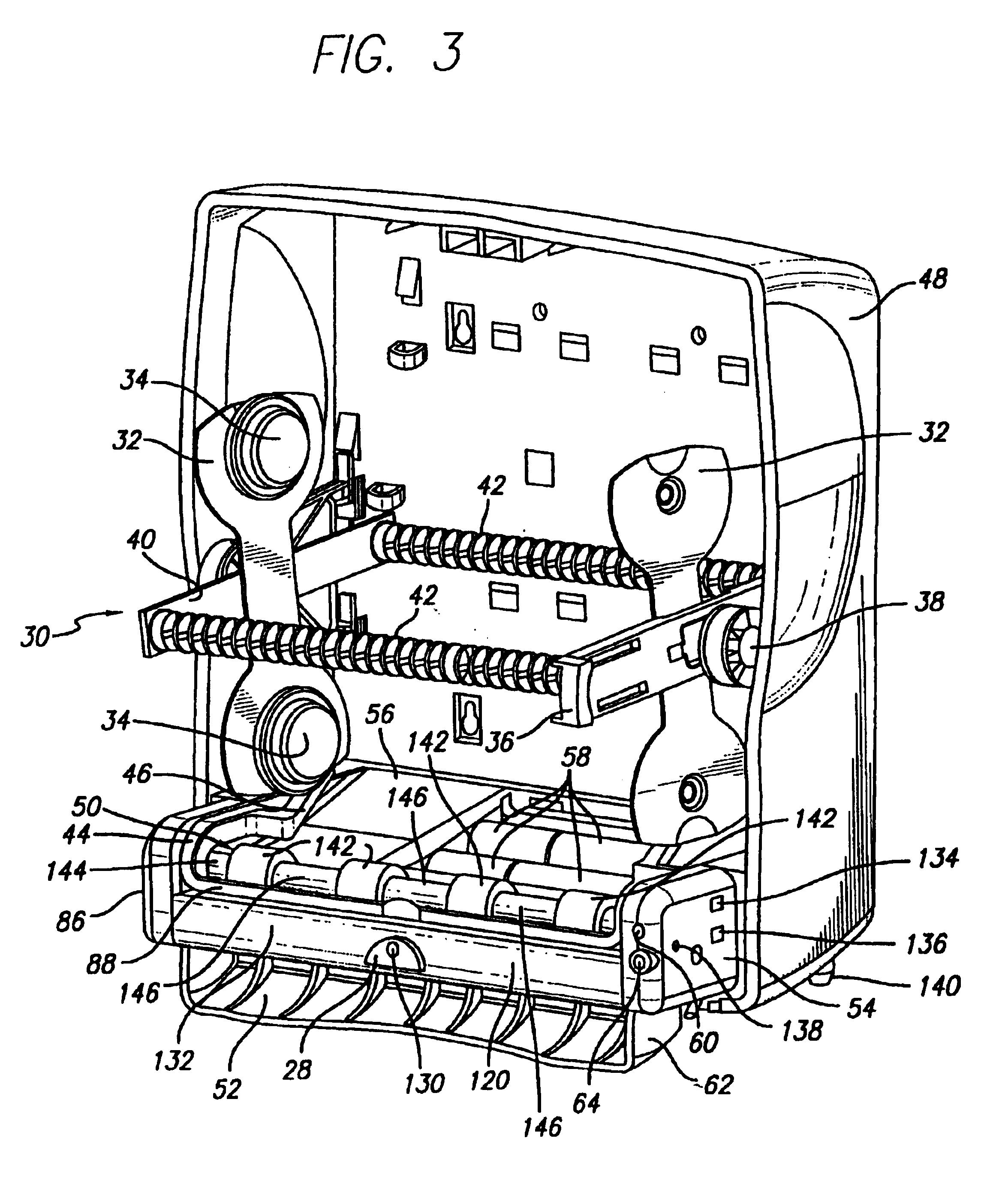Proximity detection circuit and method of detecting small capacitance changes
a capacitance change and proximity sensor technology, applied in the field of paper roll dispensers, can solve the problems of difficult loading and/or operation of transfer devices, less frequent use of transfer devices, and relatively long and difficult procedures
- Summary
- Abstract
- Description
- Claims
- Application Information
AI Technical Summary
Benefits of technology
Problems solved by technology
Method used
Image
Examples
second embodiment
this invention comprises a second electronic proximity sensor. The second detector circuit is a miniaturized, micro-powered, capacitance-based proximity sensor designed to detect the approach of a hand to a towel dispenser. It features stable operation and a three-position sensitivity selector.
FIG. 10 shows the whole proximity detector circuit. In order to examine the circuit more carefully, FIG. 10 is broken out into sections 10A through 10E. These component circuits are shown separately as FIGS. 10A through 10E, corresponding to the breakout shown in FIG. 10.
At the heart of the proximity detector is an adjustable asymmetric rectangular wave oscillator running in a range of 24 kHz to 40 kHz, as shown in FIG. 10A. Once an initial adjustment has been set it is not readjusted during operation, normally. The asymmetrical feature of having a longer on-time and shorter off-time allows for more useable signal, i.e., on-time. This 24 kHz to 40 kHz oscillation range provides a basis for a h...
PUM
 Login to View More
Login to View More Abstract
Description
Claims
Application Information
 Login to View More
Login to View More - R&D
- Intellectual Property
- Life Sciences
- Materials
- Tech Scout
- Unparalleled Data Quality
- Higher Quality Content
- 60% Fewer Hallucinations
Browse by: Latest US Patents, China's latest patents, Technical Efficacy Thesaurus, Application Domain, Technology Topic, Popular Technical Reports.
© 2025 PatSnap. All rights reserved.Legal|Privacy policy|Modern Slavery Act Transparency Statement|Sitemap|About US| Contact US: help@patsnap.com



